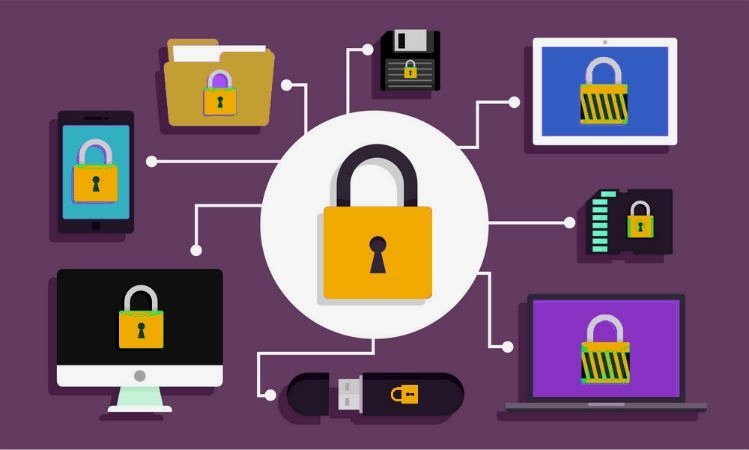
In today’s interconnected world, where digital communication plays a central role in our personal and professional lives, the threat of phishing attacks looms larger than ever before. Phishing attacks have become increasingly sophisticated and prevalent, targeting both individuals and organizations, leading to significant financial losses, data breaches, and reputational damage. Understanding the rise of phishing attacks and learning how to protect against them is crucial in maintaining online security and safeguarding sensitive information.
Read More: Cybersecurity Threats to the Financial Industry and How to Prevent Them
Introduction to Phishing Attacks
Phishing attacks are a form of cybercrime where malicious actors impersonate trustworthy entities to deceive individuals into sharing sensitive information such as login credentials, financial details, or personal data. These attacks typically occur through email, text messages, or fake websites, exploiting human vulnerabilities and trust in order to gain unauthorized access or commit fraudulent activities.
Understanding How Phishing Attacks Work
Phishing attacks rely on various psychological and technical tactics to trick unsuspecting victims. By masquerading as a legitimate entity, attackers create a sense of urgency, fear, or curiosity to entice individuals to divulge confidential information. They often employ social engineering techniques, utilizing sophisticated email templates, cloned websites, or even phone calls to make their ruse more convincing.
Common Types of Phishing Attacks
Phishing attacks can take different forms, each with its own methodology and approach. Understanding these common types can help individuals and organizations better recognize and protect against potential threats.
Email Phishing
Email phishing is one of the most prevalent forms of phishing attacks. Attackers send deceptive emails, often imitating trusted organizations or individuals, and prompt recipients to click on malicious links or provide sensitive information. These emails may appear authentic, featuring logos, language, and formatting that mimic legitimate correspondence.
Website Spoofing
Website spoofing involves the creation of fraudulent websites that closely resemble legitimate ones. Attackers trick users into believing they are accessing a trustworthy website, such as a banking portal or an online store, and prompt them to enter sensitive data. These spoofed websites often have subtly altered URLs or visually identical interfaces.
Smishing
Smishing, a combination of “SMS” and “phishing,” involves the use of text messages to deceive recipients into revealing personal information or performing certain actions. Attackers send deceptive texts claiming to be from a reputable source, such as a bank, and prompt recipients to call a specific number or click on a malicious link.
Voice Phishing
Voice phishing, or “vishing,” is a method where attackers make phone calls to unsuspecting individuals and pose as legitimate representatives of trusted organizations. Through manipulation and social engineering, they convince victims to disclose sensitive information or perform certain actions, such as transferring funds.
The Rise of Phishing Attacks
Phishing attacks have witnessed a significant surge in recent years, fueled by several factors that contribute to their success and proliferation.
Increased Reliance on Digital Communication
As digital communication channels become more pervasive, individuals and organizations rely heavily on email, messaging apps, and online platforms for communication, making them prime targets for phishing attacks. The sheer volume of digital interactions creates ample opportunities for attackers to exploit human vulnerabilities and gain unauthorized access.
Advancements in Phishing Techniques
Phishing techniques have evolved and become more sophisticated over time. Attackers constantly adapt their tactics to bypass security measures and exploit new vulnerabilities. This includes leveraging personalization, crafting highly convincing messages, and utilizing advanced social engineering techniques.
Targeting of Individuals and Organizations
Phishing attacks no longer solely target individuals but have extended to organizations of all sizes, from small businesses to large enterprises. Cybercriminals recognize the potential for substantial financial gains and the value of sensitive data held by organizations, making them attractive targets.
Impact of Phishing Attacks
Phishing attacks can have severe consequences, both for individuals and businesses, leading to financial losses, data breaches, and reputational damage.
Financial Losses
Phishing attacks can result in significant financial losses for individuals and organizations. By gaining unauthorized access to bank accounts, credit card information, or sensitive financial data, attackers can carry out fraudulent transactions or even drain victims’ funds.
Data Breaches
When successful, phishing attacks often lead to data breaches, where attackers gain access to sensitive personal or corporate information. This can include customer data, trade secrets, or intellectual property, causing substantial harm to individuals and businesses alike.
Reputational Damage
A successful phishing attack can have far-reaching consequences for an individual or organization’s reputation. Breached trust, compromised customer data, and negative publicity can lead to a loss of credibility and customer loyalty, impacting long-term success.
How to Protect Against Phishing Attacks

Protecting against phishing attacks requires a proactive approach and the implementation of various preventive measures. Here are some effective strategies to enhance online security:
Employee Training and Awareness
Education and training programs play a vital role in preventing phishing attacks. Organizations should conduct regular training sessions to educate employees about phishing techniques, red flags to look out for, and safe practices for handling suspicious emails or messages.
Implementing Email Filters and Spam Detectors
Deploying robust email filters and spam detectors can help prevent phishing emails from reaching users’ inboxes. These tools analyze incoming messages, flagging suspicious content and potential threats before they can reach the intended targets.
Two-Factor Authentication
Enabling two-factor authentication (2FA) adds an extra layer of security to user accounts. By requiring a second verification step, such as a unique code sent to a mobile device, 2FA helps prevent unauthorized access, even if attackers have acquired login credentials through phishing.
Secure Browsing Practices
Practising secure browsing habits is essential for safeguarding against phishing attacks. Users should only access websites with secure HTTPS connections, avoid clicking on suspicious links or pop-ups, and regularly clear their browsing data to minimize the risk of targeted ads or tracking.
Keeping Software and Systems Up to Date
Regularly updating software, operating systems, and security patches is crucial for closing vulnerabilities that attackers may exploit. Staying up to date with the latest security updates helps protect against known phishing techniques and ensures the effectiveness of security measures.
Recognizing Phishing Red Flags
Being able to identify phishing red flags is crucial in defending against attacks. By recognizing suspicious signs, individuals can avoid falling prey to deceptive tactics employed by cybercriminals.
Suspicious Email Requests
Phishing emails often include suspicious requests, such as urgent calls to action, requests for personal information, or threats of account suspension. Users should scrutinize such requests and verify their legitimacy through trusted channels before taking any action.
Poorly Designed Websites
Phishing websites are often poorly designed and may contain grammatical errors, inconsistencies, or unusual URL structures. Users should be wary of websites that appear unprofessional or exhibit signs of poor design, as they may be indicators of a phishing attempt.
Urgency and Fear Tactics
Phishing attackers frequently employ urgency and fear tactics to manipulate individuals into making hasty decisions. Alarmist messages, threats of legal action, or warnings about imminent financial loss should be treated with caution. Taking a step back, verifying the information independently, and consulting trusted sources can help mitigate the risk.
Reporting Phishing Attacks
Reporting phishing attacks is essential for combatting cybercrime and protecting others from falling victim to similar scams. Individuals who encounter phishing attempts should take the following steps:
Reporting to the Appropriate Authorities
Phishing attacks should be reported to the relevant authorities, such as local law enforcement agencies or national cybercrime units. These organizations can investigate the incidents, track down perpetrators, and take legal action against them.
Notifying Affected Individuals or Organizations
If a phishing attack targets an organization, it is crucial to notify affected individuals promptly. Informing employees, customers, or stakeholders about the incident helps raise awareness, mitigate potential damage, and prevent the further spread of the attack.
Role of Technology in Combating Phishing Attacks
Technological advancements continue to play a crucial role in combating phishing attacks and enhancing online security.
Anti-Phishing Software
Anti-phishing software and tools are designed to detect and block phishing attempts in real time. These solutions leverage sophisticated algorithms and databases to analyze incoming emails, websites, and messages, identifying potential threats and warning users.
Artificial Intelligence and Machine Learning
Artificial intelligence (AI) and machine learning (ML) technologies are increasingly being utilized to detect and prevent phishing attacks. These technologies analyze patterns, behaviours, and characteristics associated with phishing attempts, improving detection rates and response times.
Case Studies: Notable Phishing Attack Incidents
Examining real-world examples of phishing attack incidents can provide valuable insights into the strategies employed by attackers and the impact of successful attacks. Some notable cases include:
- The “Fancy Bear” phishing campaign targeted political entities during the 2016 US presidential election.
- The “Google Docs” phishing attack affected millions of Gmail users in 2017.
- The “SolarWinds” supply chain attack in 2020, involved phishing techniques to gain unauthorized access to numerous organizations.
Future Trends in Phishing Attacks
As technology advances, new trends and techniques in phishing attacks continue to emerge, requiring constant vigilance and adaptation to maintain online security.
AI-Powered Phishing Attacks
Attackers are increasingly leveraging AI to automate and enhance their phishing campaigns. AI-powered attacks can analyze vast amounts of data, personalize messages, and mimic human behaviour, making them harder to detect.
Social Engineering Techniques
Phishing attacks are becoming more focused on exploiting social engineering techniques. By researching and tailoring attacks based on individual profiles and online behaviour, attackers can increase the effectiveness of their campaigns.
Read More: Microsoft Azure Portal Outage Linked to Spike in Network Traffic
Frequently Asked Questions (FAQs)
- What should I do if I suspect a phishing attack? If you suspect a phishing attack, do not click on any suspicious links or provide personal information. Instead, report the incident to the appropriate authorities and notify the organization being impersonated.
- Can strong passwords protect against phishing attacks? While strong passwords are important, they alone cannot protect against phishing attacks. Implementing additional security measures, such as two-factor authentication and user awareness training, is crucial for comprehensive protection.
- Are phishing attacks only targeted at individuals? No, phishing attacks target both individuals and organizations. Cybercriminals recognize the potential for financial gain and access to sensitive data held by businesses, making them attractive targets.
- How can businesses educate employees about phishing attacks? Businesses can conduct regular training sessions to educate employees about phishing techniques, red flags, and safe practices for handling suspicious emails or messages. Simulated phishing exercises can also help raise awareness and test employees’ responses.
- Is it possible to recover from a successful phishing attack? While recovering from a successful phishing attack can be challenging, prompt action is crucial. This includes securing compromised accounts, notifying affected parties, and implementing additional security measures to prevent future incidents.
Conclusion
The rise of phishing attacks poses a significant threat to individuals and organizations in today’s digital landscape. Understanding the tactics employed by attackers and implementing proactive security measures are crucial for protecting against these threats. By educating employees, utilizing advanced technology, and staying vigilant, individuals and organizations can mitigate the risk of falling victim to phishing attacks and safeguard their valuable information.








One Comment